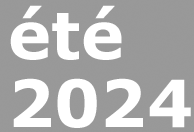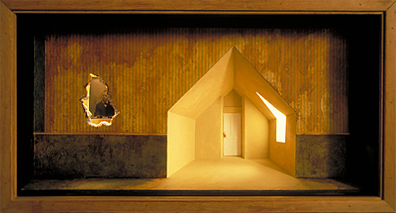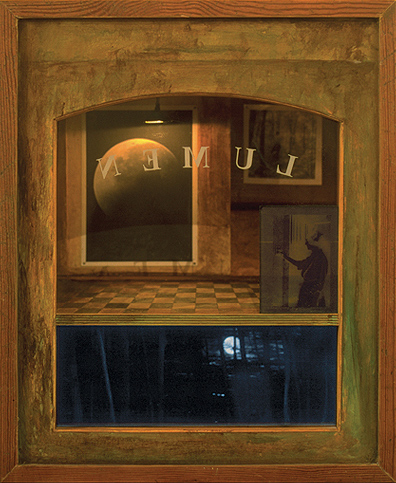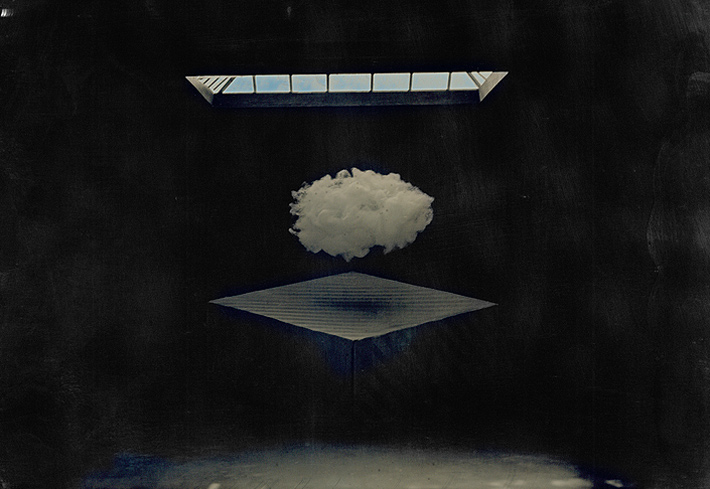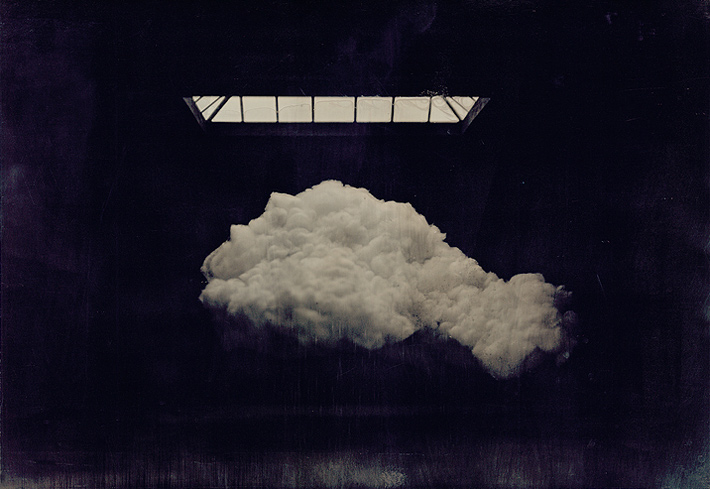|
|
|||||||||||||||||||||||||||
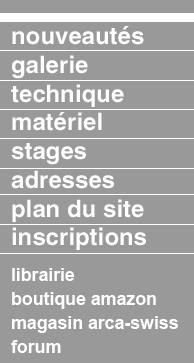
|
Daguerreotypes from Sean Culver
How did you come to the daguerreotype process? Making daguerreotypes was the result of following a natural course in my earlier photographic and sculptural work. I had been trained in traditional silver-gelatin printing, which later was translated into sculptural forms by mimicking the images and tones in the prints and also by including the actual prints. Daguerreotypes have dimensional qualities that are both subtle and obvious which lend themselves to inclusion in sculptural work. Light effectively sculpts a finely polished surface of silver on a microscopic scale, thus rendering an image. This metal plate is then encased in glass, giving the finished daguerreotype a thickness and weight that imbues it with its own presence as a sculptural object. The focus of my sculptural work is creating space where light and surface interact. In this regard, sculpture and photography are the same. The finished pieces are metaphorical of bodies receiving and being transformed by light. This is primarily a spiritual metaphor.
Which proportion of your time as a photographer do you devote to the daguerreotype process? Making daguerreotypes is more closely
tied to my sculptural work than to my photographic work. I am
drawing, planning, making maquettes, and shooting digital reference
most of my time. This process leaves me less time to make
daguerreotypes, about once a year. Making the images is in service
to the to completion of the pre-planned work.
|
||||||||||||||||||||||||||
the photographer
|
With which equipment do you make these daguerreotypes? I have a polishing machine designed and built at the Photographer’s Formulary. I made my two buffing paddles, one buckskin and one cotton velvet. I have an early twentieth Century Kodak 5x7 (inches) camera with an uncoated lens designed for shooting glass plates and a mid-century Kodak Graflex for making 4x5s and smaller plates. For the rest I use fuming boxes and a mercury pot designed and built by Mike Robinson. I have it enclosed in a Plexiglass fume hood I built myself with an industrial exhaust fan.
Have you established any bridges between your practice as a daguerreotypist and digital photography? Yes. A few years ago I was asked to give a talk at the University of Texas to a class of graduate students. The Professor wanted me to demonstrate how I used technology in my general art-making process. While putting the talk together I surprised myself with how much that actually happened. I titled the talk “How I Use Twenty-first Century technology to Support My Nineteenth Century Working Methods.” I imparted to the students that I use digital photography for shooting reference which informs my sculptural work. Daguerreotypes often end up in those pieces. I use digital photography to shoot “plate” elements for pre-visualizing the sculptural work in the computer, and likewise have pre-visualized the look and feel of both exhibitions and installations. I also use digital photography for ultimately documenting, cataloguing, and presenting the work on the internet and with digital projection.
|
||||||||||||||||||||||||||
|
|
|||||||||||||||||||||||||||
|
What are the advantages and drawbacks of the daguerreotype as compared to other photographic processes? The advantage for me is that I get the privilege of hand-making a photographic image and object. Because the process is so unique, I do not perceive a drawback. Do you think that certain subjects are particularly suitable for daguerreotypes? For me, the possibilities are wide open. I would not want to place any restrictions on such expressions.
|
|||||||||||||||||||||||||||
|
|
|||||||||||||||||||||||||||
|
What are the main features of a good daguerreotype in your opinion? That it is fully expressive in the way that the artist intends. How do you see the future of daguerreotypes? I do not see the future of daguerreotypes as being different than any other artistic media. If the work has a challenging nature, thereby respecting it’s audience, it has a chance to be remembered and endure Would you have any advice to young photographers wishing to make daguerreotypes? Yes. Approach it with a measure of reverence and gratitude. Consider it a privilege to be given the chance. Fall in love with the process as an end in itself, then allow the image to be a surprising gift in the end.
voir également sur la daguerréotypie :
dernière modification de cet article : 2009
|
|||||||||||||||||||||||||||
|
|||||||||||||||||||||||||||

